Minamata Travel Guide: 2 Days of History, Ocean Fun & Local Flavour
Discover Minamata in 2 days: history, hot springs, eco-friendly culture, local champon, and sweets on this model Kyushu road trip itinerary.
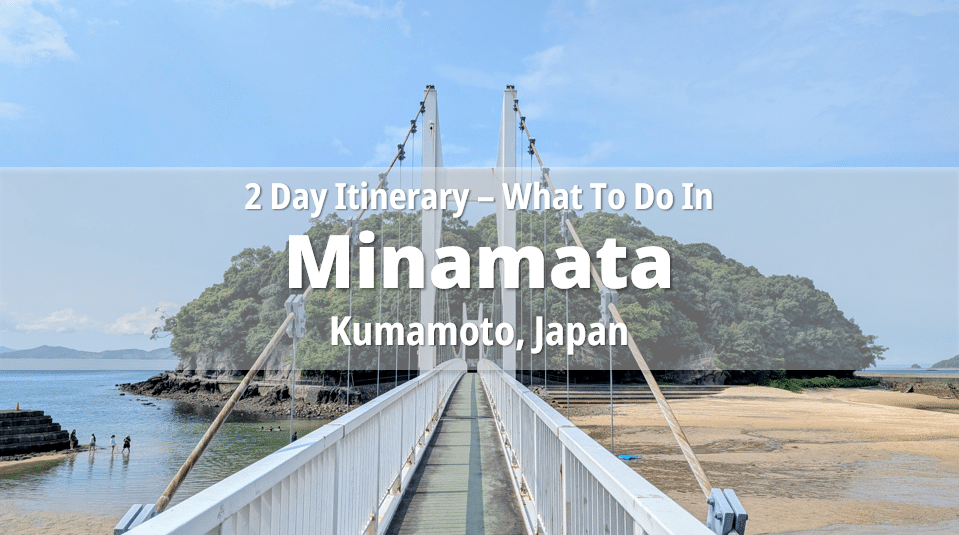
Looking for a unique stop on your Kyushu road trip? Minamata, the southernmost city on the mainland of Kumamoto Prefecture, offers a compact mix of history, seaside hot springs, eco-friendly culture, and an unexpected love of sweets.
This 1-night, 2-day model course takes you from the Minamata Disease Municipal Museum to citrus farms, diving with rare seahorses, strolling through hot spring towns, and sampling local champon noodles and desserts. With easy access by Shinkansen and car, Minamata is a destination that combines learning and leisure in a way you won’t find anywhere else.
Getting to Minamata and Getting Around
Minamata is served by JR Shin-Minamata Station on the Kyushu Shinkansen, making it accessible from major cities like Kumamoto, Fukuoka, and even Osaka or Tokyo. While it is possible to move around by local buses and taxis, the most flexible way to experience Minamata in a short time is by rental car.
Ride in Style with a Kumamon Rental Car
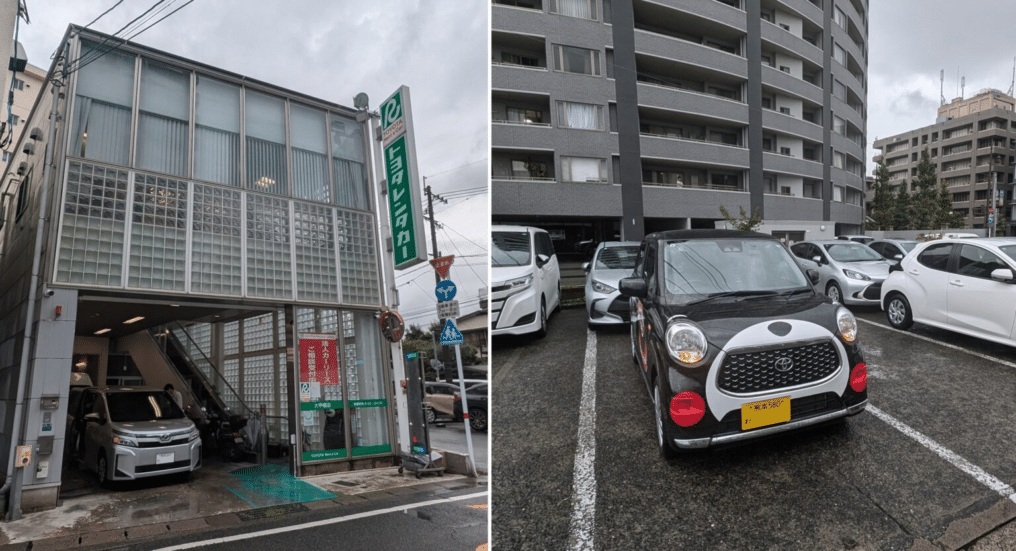
One option that makes the journey especially fun is renting a Kumamon-themed rental car. These vehicles, decorated inside and out with the beloved Kumamoto mascot, are available from Toyota Rent-a-Car locations in Kumamoto City, including Kumamoto Station, the airport, and Taikōbashi in the city centre.
Driving one of these cars around Minamata is not only practical—it’s also a great conversation starter. Locals will often smile or wave, and many visitors report that it becomes part of the travel experience itself. Inside, you’ll find Kumamon plushies and themed details down to the keys, making it a delight for fans.
The fleet includes six types of vehicles, from compact cars to SUVs, so it’s to find one that suits your travel style. Although the “Kumamon language” GPS is currently only available in Japanese, it adds a unique touch to the ride.
For more details, read our other article about Kumamon Rent-a-Car or see Toyota Rent-a-Car Kumamoto’s official Kumamon Rent-a-Car website.
1 Night, 2 Day Minamata Itinerary
Day 1
Minamata Disease Municipal Museum (10:30 am – 11:30 am)

After leaving Kumamoto City in the morning in at around 9 am, my first stop was Minamata Disease Municipal Museum, the one of the most important places to start when visiting this city. For better or worse, the name “Minamata” is inseparable from the mercury poisoning incident that unfolded here in the mid-20th century. To truly appreciate the resilience and beauty of the community today, it helps to first understand what happened.
I won’t go into too much detail here, but the museum traces the story of Minamata Disease through photographs, documents, and video. Visitors can hear the testimonies of survivors and their families—how they struggled to receive official acknowledgement of the cause of their illness, faced discrimination from society, and fought for decades for recognition and compensation.
Exhibits also explain how the sea was reclaimed and restored through an enormous clean-up project. The scale of this restoration was immense. Between 1977 and 1990, a 13-year project costing approximately 48.5 billion yen (about 320 million USD) was carried out to seal off and dredge contaminated sludge from the seabed, then reclaim the land. The reclaimed area is now home to facilities such as Eco Park Minamata, sports grounds, gardens, and research centers, dramatically reshaping the city’s coastline.
Although most of the detailed text is in Japanese, section titles are in English, and translation apps work well here. Even without fluency, the exhibits are easy to follow and highly visual
The museum is not simply about tragedy. It also highlights how Minamata has rebuilt itself, turning a painful legacy into a reminder of the importance of environmental stewardship and community strength. Many visitors come away reflecting not only on the lesser-told stories of Japan’s rapid postwar development, but also on global issues of industrial pollution and marginalized communities.

Behind the museum is a memorial instillation with a view of the ocean. The museum is also a frequent destination for Japanese elementary school field trips, so don’t be surprised if you encounter groups of children, especially on weekdays.
Lunch with a View at Fukuda Farm (11:50 am – 1:00 pm)
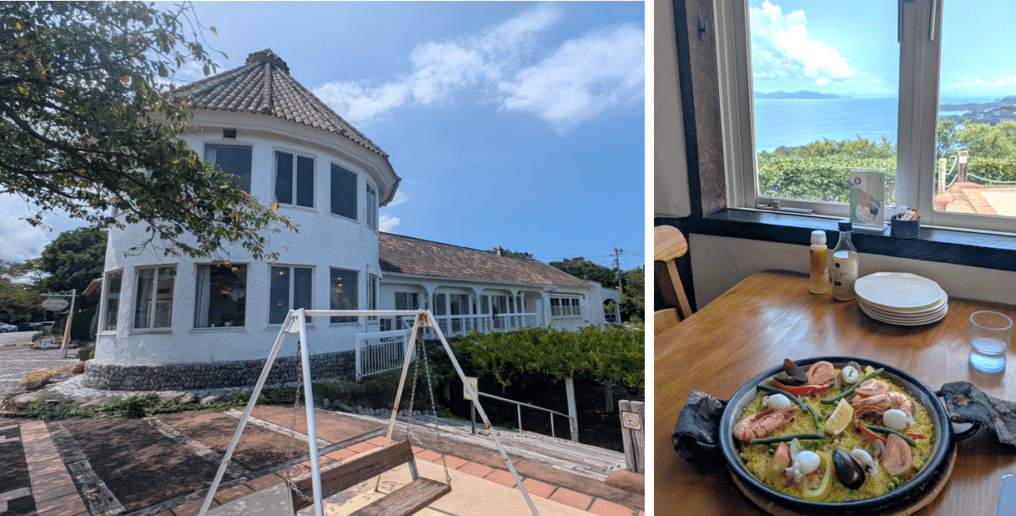
Perched on a hillside overlooking the Shiranui Sea, Fukuda Farm is one of Minamata’s signature stops. From the terrace, the sparkling coastline stretches out before you, and for a moment you might even feel as if you’ve been transported to the Mediterranean—except here the slopes are much more thickly green and forested, linking sea and land in a striking landscape.
Fukuda Farm began in 1960, when its founders cleared 17 hectares by hand to plant mikan and amanatsu citrus trees, creating Kumamoto’s first tourist orchard. Over time, the family expanded from agriculture into food processing and hospitality, launching juices, sangria, craft beer, and other products that make use of local citrus. The striking white buildings of the restaurant and shop, inspired by Spain, became the centerpiece of what was later called the “Yunoko Spain Village.”
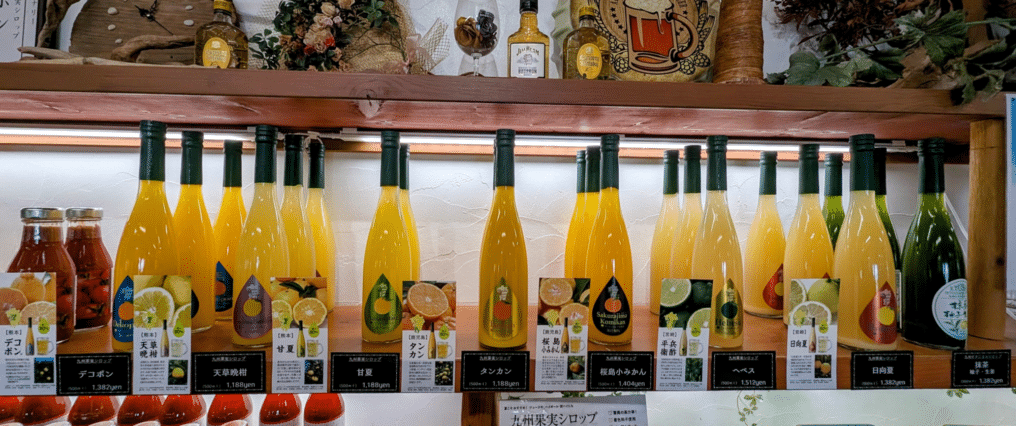
Today, visitors come not only to shop for local goods but also to enjoy a leisurely farm-to-table lunch. I ordered a seafood paella—officially for two people, but happily tackled on my own—layered with giant prawns, cuttlefish, and rice that crisped beautifully at the bottom of the pan. The flavours were rich, but the ocean view from the wide patio stole the show.
There’s also a bakery at the entrance where you can try soft-serve ice cream made with Kumamoto’s prized dekopon citrus, and in the harvest season (October–December) you can even go fruit picking in the orchards.
Ocean Adventures at Nagisa no Koban HIMETATSU (1:00 pm – 4:00 pm)
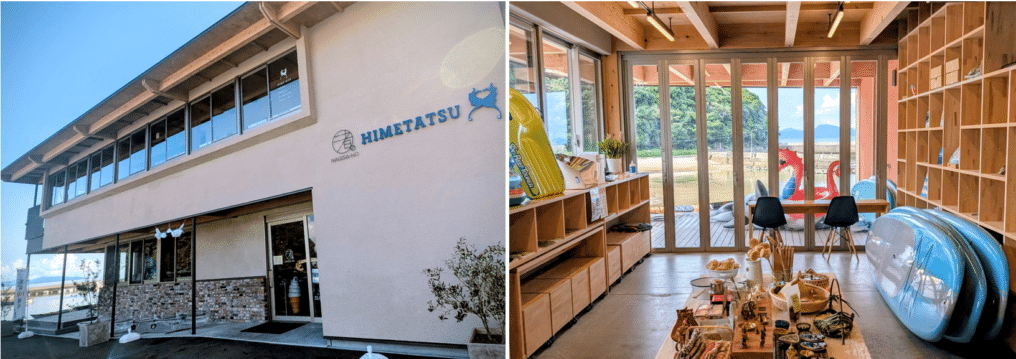
My next stop was Nagisa no Koban HIMETATSU, newly opened in 2024 in the seaside hot spring town of Yunoko Onsen (where I would later spend the night). The name literally translates as “Seaside Police Box,” but in reality it serves as a hub for almost every kind of marine activity in the area: snorkeling, diving, kayaking—including transparent kayaks—SUP paddleboarding, and even ocean conservation programs.
I opted for a trial diving session, despite having no license or prior experience. With a professional instructor, beginners can join a 2.5-hour program that stays at shallow depths of 2–3 meters. Even at that level, the waters revealed a surprising diversity of sea life. All of the gear was provided for the experience, and there was a place to change into proper clothing.
To reach our diving spot, we crossed the pedestrian bridge to the small island offshore. At the end of the bridge stood a modest shrine dedicated to Hiruko Daimyōjin, an early form of Ebisu. In Japanese mythology, Hiruko (“leech child”) was the first child of the creator gods Izanagi and Izanami. Born imperfect, he was cast adrift at sea. Over time, Hiruko came to be identified with Ebisu, the smiling god of good fortune and bountiful catches. At this shrine, Hiruko occupies the place of honor, with a smaller Ebisu statue to his side—together symbolizing both the mythological origins and the later, widely beloved deity. My instructor prompted me to pause here and pay respects before entering the ocean.

After a crash-course on diving we entered the ocean and were almost immediately surrounded in an other-worldly environment of undersea life. The highlight was the himetatsu, a rare species of seahorse after which the facility is named. Thanks to decades of environmental restoration, Minamata’s waters are now home to a population of 200–300 of these fragile creatures. Their breeding season in June and July is a rare opportunity to observe seahorses mating up close. When I visited in early August, newborn were already floating serenely among the beds of coral.
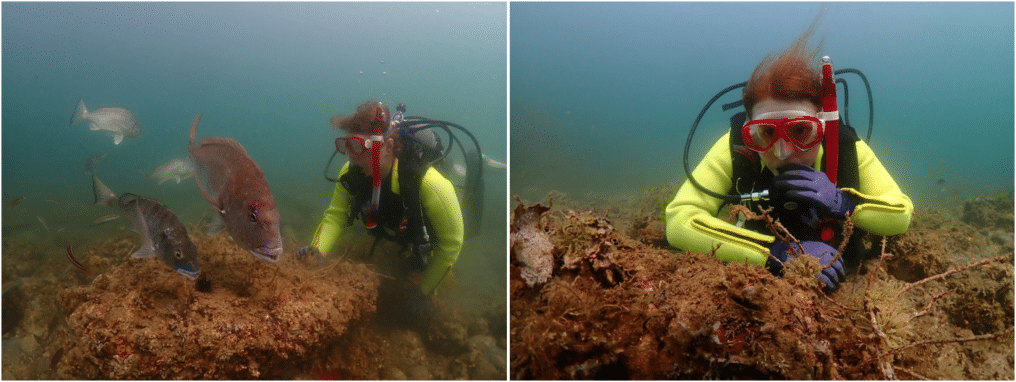
The dive also revealed another side of conservation. My instructor, Morishita-san, demonstrated how to control the overpopulation of sea urchins—creatures that devour seaweed beds and deprive smaller fish and seahorses of shelter. Dredging up a few urchins hiding in the sea bed with a metal rod, he smashed them open, released a flurry of activity as schools of fish and even a massive sea bream rushed in to devour them. He explained that he had special permission from the local fishing cooperative to do so, and limits dives to small groups of one or two, both to minimize disturbance and to maintain the fragile balance of the marine ecosystem. His expertise is in high demand, guiding everyone from NHK documentary crews to marine researchers from across Japan.
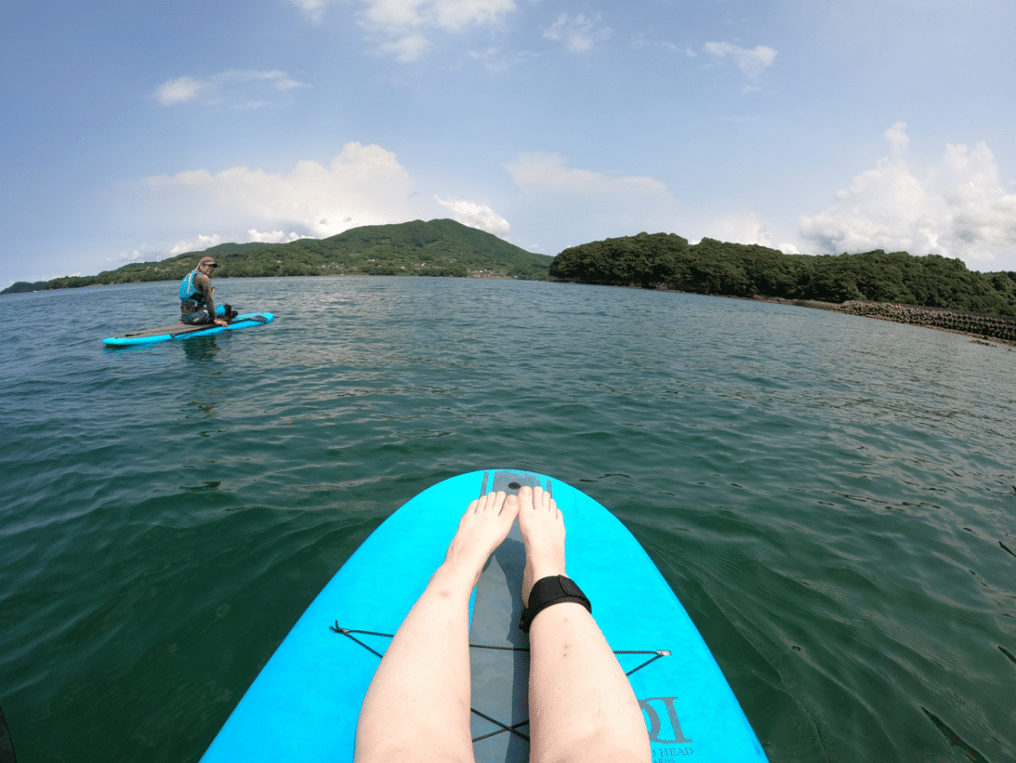
For those who prefer to stay on top of the water (if you can keep your balance) SUP paddleboarding is another option. For me this was equal parts balancing act and accidental swimming—falling into the water five or six times was actually quite refreshing under the summer sun. SUP and kayaking routes partially circle the Yunoko island, which can also be reached on foot at low tide or via a pedestrian bridge when the tide is high. The region’s connection to water runs deep: Minamata is a long-time stronghold of boat racing, a tradition said to have arrived via Nagasaki from China. Local teams here continue to excel at the national level.
The facility also features HIME HUS café on the second floor, where you can relax with pizza, pasta, or desserts made from local ingredients while enjoying panoramic views of the sea. It’s an ideal way to wind down after time in the water. I caught my breath by enjoying a soft drink and looking out at the ocean.
Strolling around Yunoko Onsen (4:00 pm – 5:00 pm)

After my diving adventure, I had some time to wander around the Yunoko Onsen area before checking into my hotel. A short walk led me across the bridge to Yunoko Island Park, where you can look back on the entire hot spring town from above. Along the way, I encountered several turtle statues, the most famous of which is the “Wish-Granting Turtle.” Local custom says that if you toss a coin into the jar placed in front of the turtle, your wish will come true. Be warned, though—the jar is set a couple of meters away, so it might take a few tries (and a few coins) to succeed.

Back near the beach, one of the quirkiest spots is the Yunoko Beach Boat-Shaped Bath, an outdoor tub built in the shape of a ship. Unusual for Japan, you can soak here while still wearing your swimsuit, making it a perfect stop after swimming or SUP. The water comes directly from the local Yunoko hot springs, known for their smooth, skin-friendly qualities. Following Japanese custom, small buckets are provided so you can rinse off sand and seawater before stepping in. It’s simple but wonderfully refreshing—highly recommended. Note that this particular bath is only open from late July through the end of August — essentially, the summer holiday period.
At the far end of the onsen district stands the Yunoko Fishing Park, where visitors can try their hand at fishing, especially for tachiuo (cutlassfish).

On the way there, however, I stumbled upon something unexpected: the massive, abandoned remains of Sankaikan (山海館), once Yunoko’s grandest ryokan. The complex of three large buildings included Japan’s largest cave baths before it went bankrupt in 2015. Today, the central wooden structure looks on the verge of collapse, with gabled roofs where lilies bloom between the tiles. Ivy has crept over the Western-style annexes on either side. The atmosphere is haunting—like something straight out of Spirited Away, as if one might slip into another world where spirits still bathe.
Please be aware that this site is still private property and not an officially sanctioned tourist site. And absolutely do not enter. Due to substantial structural decay over the past 10 years, entering the building is extremely unsafe. However, for the time being it remains part of the landscape of Yunoko Onsen. Please enjoy the view from a distance.
Between the white-sand beach, the playful wish-making turtle, the unique hot spring bath, and even the bittersweet sight of Sankaikan’s ghostly silhouette, Yunoko Onsen is a place full of contrasts—where the seaside town reveals both its playful side and its layered history.
Alternative choice: Yunotsuru Onsen
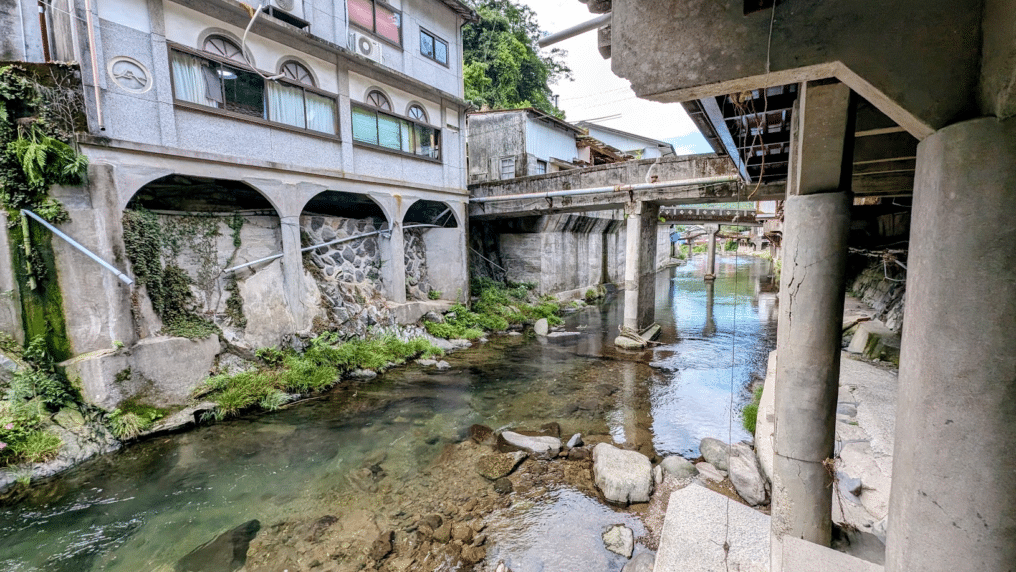
If you’re not an ocean person and prefer your hot springs in a quiet riverbed surrounded by mountains, Minamata has that too. Check out our article “Soaking in the Past: 8 Storied Onsen of Minamata” comparing Yunoko Onsen with Yunotsuru Onsen, which dives into the history of both areas and highlights baths you can enjoy even if you’re not staying overnight.
Checking in at Umi to Yuyake (5:00 pm)

After such an active day, it was time to check into my hotel: Yunoko Onsen Umi to Yuyake, whose name fittingly translates to “Ocean and Sunset.” True to its name, the highlight here is the view. When I visited, sunset came just before 7 p.m.—perfect timing for dinner. The sun slowly dipped toward the horizon, the gentle waves of the Shiranui Sea catching the reddening light and turning into a shimmering golden pathway across the water.

I chose a Japanese-style tatami room, complete with balcony seating where you can relax and enjoy the sea breeze. Before dinner, I slipped into a yukata and headed to the upper-floor hot spring bath, which offers panoramic ocean views. The staff pointed out that from here, you can see not only the Amakusa Islands (Kumamoto Prefecture) but also Nagashima and Shishi-jima (Kagoshima Prefecture), and on a clear day even Unzen in Nagasaki—three prefectures in a single view.
Dinner is served buffet style, with all-you-can-eat sashimi and sushi as the centerpiece. It’s a chance to taste both mainland Japan’s soy sauce (sharper) and Kyushu-style soy sauce (sweeter), as well as a local Kumamoto twist: sashimi paired with yuzu-kosho, a spicy, citrusy paste made from yuzu peel and green chili peppers. Other standouts included giant prawns served as crispy ebi fry, grilled turban shells (sazae), juicy steak, and an array of seasonal dishes and desserts.
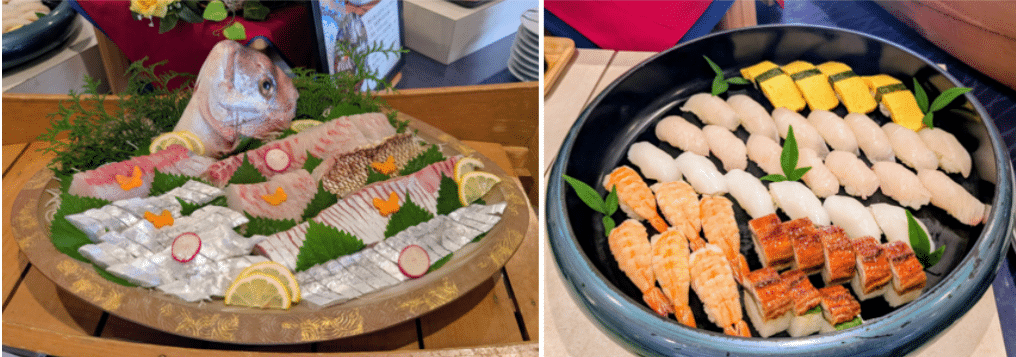
To top it off, there’s an open bar with cocktails, beer, and sake—including bottles from Kameman Shuzō, a sake brewery in nearby Tsunagi. With the glowing sunset over the islands and a table full of local flavors, the evening felt like a celebration of Minamata’s place between land and sea.

Day 2
Breakfast and Bamboo Gardens (8:00 am – 10:50 am)
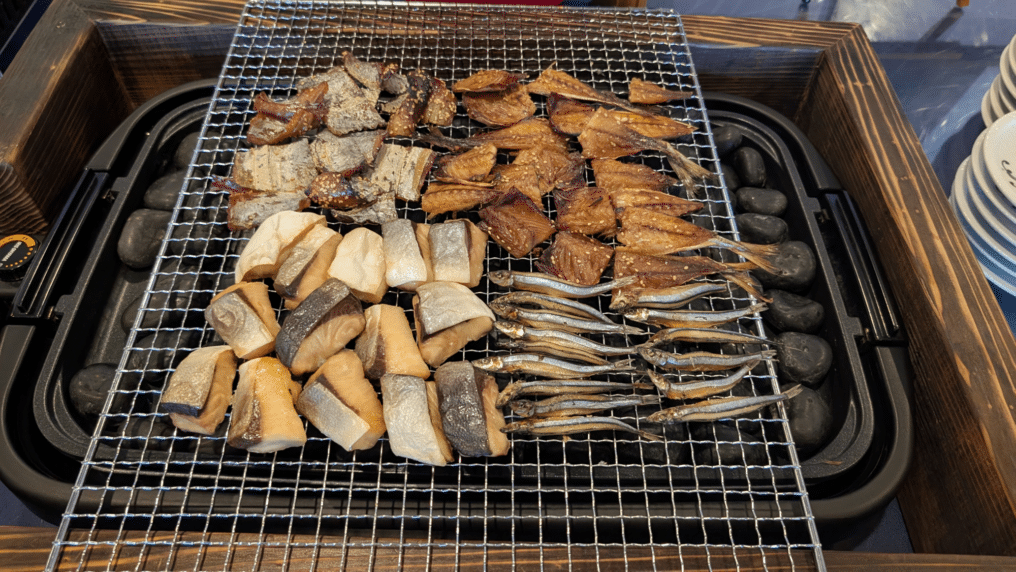
The next morning began with breakfast at the hotel, where I enjoyed a spread of grilled local fish alongside a more Western-style selection. A highlight was a cup of wakocha, Minamata’s locally grown black tea. Unlike most of Japan, which primarily produces green tea, Minamata has a tradition of oxidizing the same tea leaves to create black tea, much of which was once exported to tea-drinking countries in Europe. Today, there are local producers that are taking on the challenge of growing their tea without pesticides, making it a unique souvenir well worth trying and bringing home.

After breakfast, I headed back toward the reclaimed land area near the Minamata Disease Municipal Museum to visit Chikurin-en. This bamboo garden is located on reclaimed land, with one of its entrances right by the former wastewater outlet (Hyakken Drainage Outlet – 百間排水口) where mercury once entered the sea—a symbolic place to begin exploring how the land has been restored.
Chikurin-en is essentially a botanical garden devoted entirely to bamboo. I had no idea there were so many varieties. The garden is divided into two main zones: a domestic section showcasing Japanese bamboo species, and an international section featuring bamboo from China, India, and even North and South America. Walking among the towering stalks, I realized how much diversity exists within what I once thought was just a single plant.
Souvenirs and Sustainability at the Roadside Station (11:00 am – 11:30 am)
Next, I stopped at Roadside Station Minamata, a michi-no-eki (道の駅) located within Eco Park Minamata. This roadside station isn’t just a convenient rest area—it reflects the community’s strong focus on sustainability.
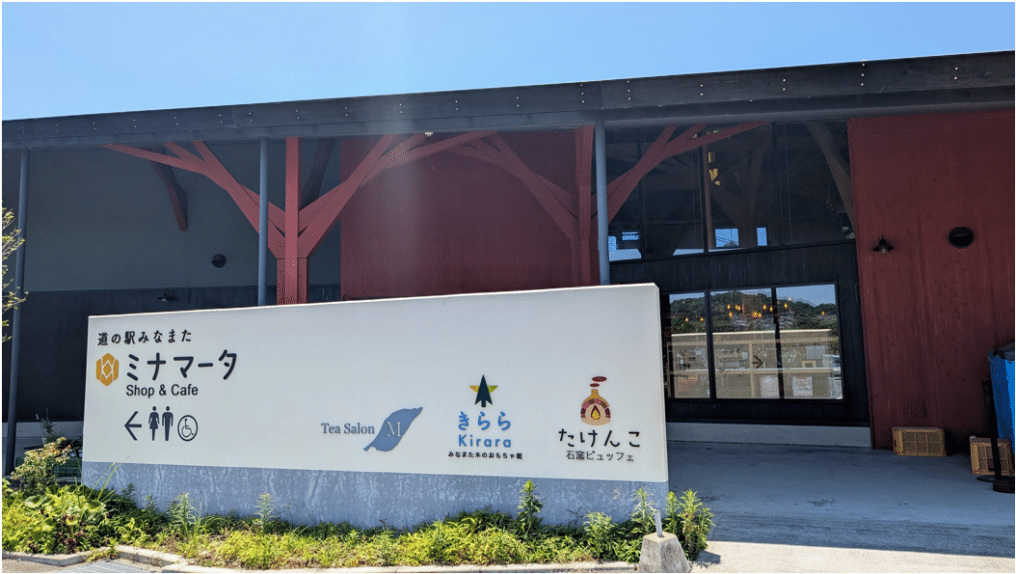
Walking through the Shop & Café Minamata, I noticed a common thread running through the displays: many local producers emphasize low-impact or environmentally friendly methods. From organic pickled daikon to handmade soaps, the products here express Minamata’s eco-conscious mindset, a legacy of the city’s past and its determination to move forward responsibly.

Another thoughtful touch is that most items include English labels on their price tags, noting both the product details and the producer’s name and town. This makes it easy to identify which items are truly local—and since many of these products are hyper-local and rarely sold outside the region, it’s worth picking some up while you’re here.
Some highlights include:
・Wakocha tea (locally grown black tea)
・Warōsoku (traditional plant-based candles made from hasenoki nut oil)
・Kanzuke dried daikon pickles, air-dried in the seaside winter wind before being preserved in sweet soy sauce
・Sake from Kameman Brewery, including eco-friendly varieties made with the aigamo method (using ducks instead of pesticides to control pests in rice paddies), and even rare brown rice sake
The café inside offers drinks and sweets, including Minamata’s own black tea and seasonal desserts.
This fits perfectly with what I came to realize during my visit: Minamata is a true town of sweets, with a surprising variety of local confectioneries that we’ll explore later. The roadside station makes for a great spot to rest, refresh, and reorient before continuing your journey.
Lunch at Kiraku Shokudo – The Home of Minamata Champon (11:40 am – 12:30 pm)

For an early lunch, I headed to Kiraku Shokudo (喜楽食堂), a long-standing local favorite with a large menu of hearty, affordable set meals. While everything here is loved by the community, their signature dish is none other than Minamata Champon.

Champon is most famously associated with Nagasaki, but the dish is thought to have spread from Nagasaki first to the Amakusa Islands in Kumamoto before reaching Minamata. According to local lore, a fisherman from Amakusa brought the recipe here, and it quickly caught on with Minamata’s working population thanks to its hearty, nourishing character.
The dish features generous portions of vegetables and pork, making it both healthy and filling. What sets Minamata Champon apart are its pale white noodles—lighter in color than the yellower champon noodles found elsewhere—and a broth made entirely from pork bones. The result is a mild yet deeply satisfying soup that has sustained locals for decades.
Founded in 1950, Kiraku Shokudō has preserved this same flavor ever since, earning loyal regulars who have been dining here for generations. Today, Minamata Champon is recognized in guidebooks and food tours alike as a distinctive regional variation with its own proud history and identity.
Sweet Discoveries in Minamata (12:30 pm – 2:00 pm)
Before heading back to Kumamoto, I set off on a hop, skip, and jump through town to uncover one of Minamata’s best-kept secrets: its love of sweets.
For a relatively small regional city, Minamata has an astonishing number of confectionery shops—eleven of them, to be exact, according to the local tourism website’s dedicated sweets map (Go Minamata – Sweets, Japanese only). From traditional wagashi to Western-style pastries, Minamata is known across Kumamoto for its collective sweet tooth.
The reasons are debated. Some suggest it may be linked to the area’s proximity to sugarcane production in neighboring Kagoshima, while others point to the postwar years when an influx of skilled workers brought disposable income, fueling a boom in cafés and pastry-making. Whatever the case, the city’s abundance of sweets shops continues to delight locals and visitors alike.
During my visit, I managed to try three of them (and resist the temptation of the rest—for now):
Onitsuka Nisshōdō (鬼塚日昭堂)

Famous for its karintō manju, a deep-brown pastry that looks like chocolate but gets its color from brown sugar. The outside is unbelievably crisp, giving way to a soft, lightly sweet bean paste inside. Other wagashi like their nama cream daifuku (fresh cream–filled mochi) here are equally worth sampling.
Mont-Blanc Fujiya (モンブランフジヤ)
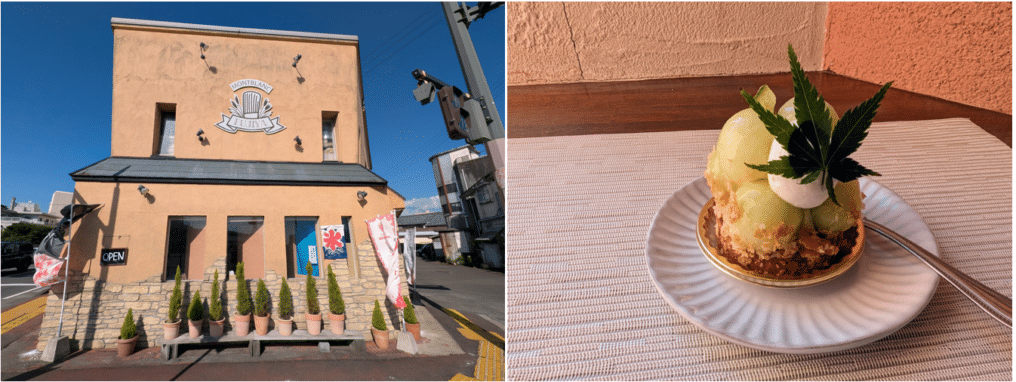
A pâtisserie with a wide selection of cakes, pastries, ice cream, and even kakigōri shaved ice. They emphasize using local, seasonal ingredients, so the lineup changes throughout the year. It’s a great spot to sit down and let everyone in your group pick their favorite.
Yanagiya Honpo (柳屋本舗)
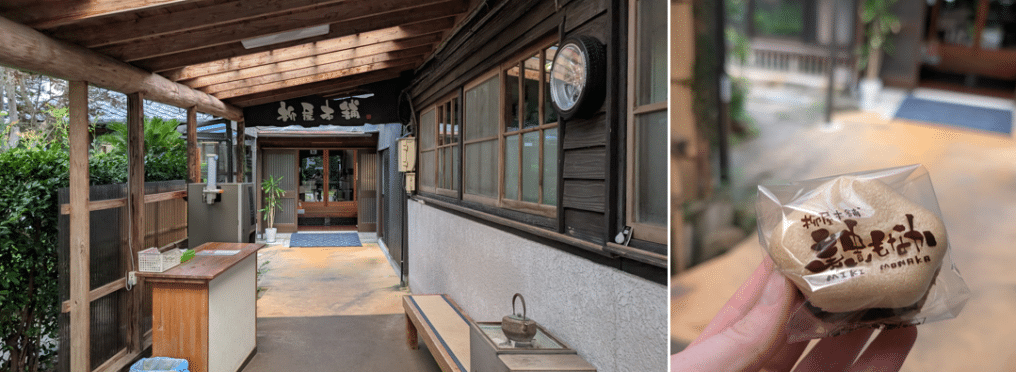
Established in 1933, this traditional wagashi shop is best known for its Miki Monaka, a wafer filled with carefully crafted sweet bean paste. The name comes from the founder’s wife, and the recipe has been lovingly preserved across generations.
After enjoying a variety of sweets (and getting some extra to bring for the road and as souvenirs), I headed back to Kumamoto City, but you could also extend your trip onto other areas such as Goshoura in Amakusa (by sea taxi), venture west into Hitoyoshi-Kuma (see our Hitoyoshi-Kuma Complete Guide: A Valley 700 Years in the Making) or heading south into Kagoshima Prefecture.
Conclusion – A Compact Journey Through Sea, History, and Flavor
In just two days, Minamata revealed itself as a place of contrasts and resilience. From confronting its past at the Minamata Disease Municipal Museum, to enjoying Mediterranean-like views and cuisine at Fukuda Farm, to diving into the sea alongside rare seahorses at HIMETATSU, the experiences here blend learning, nature, and relaxation in equal measure.
For travelers exploring Kyushu by car, Minamata makes an ideal stop: compact enough to explore in a day or two, yet full of depth, character, and surprises. Whether you come for the hot springs, the seafood, the history, or the sweets, Minamata offers an experience that is both eye-opening and heartwarming—proof that even a city once scarred by tragedy can blossom into a destination of learning, enjoyment, and renewal.


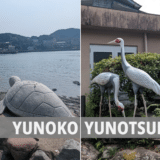
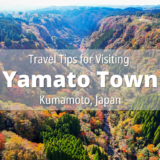
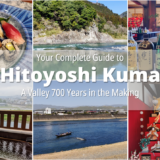
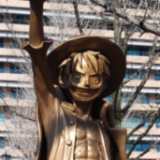
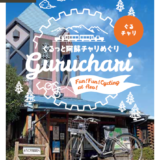
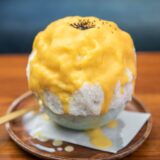
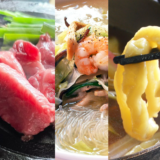

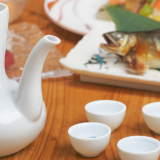

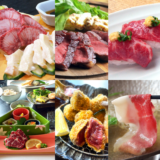

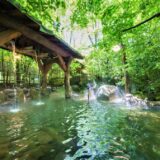

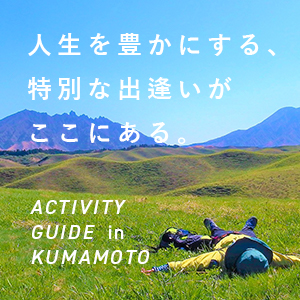


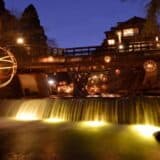
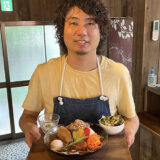

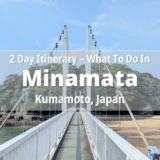
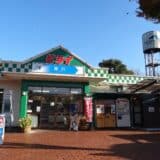
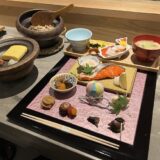

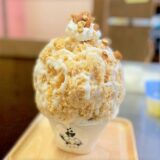

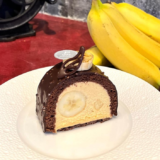
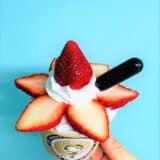
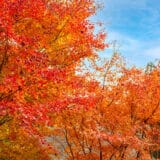

[…] 👉 See our article about a 1-night, 2-day itinerary featuring an overnight stay at Yunoko Onsen for more ideas on how to enjoy the area. […]